American cyclist Lance Armstrong managed to take illegal performance-enhancing drugs for well over a decade before an anti-doping investigation found him guilty and banned him from competition for life. Baseball player Mark Maguire admitted to taking anabolic steroids for over a decade, including when he set the record for most home runs in a single season. And even ballet dancers have used banned muscle-builders to catapult their careers.
These drugs are illegal partly because of the advantages they confer, but mostly because they’re so harmful to health in the long run. A short list of their dangerous side effects includes “early heart attacks, strokes, liver tumors, kidney failure, and psychiatric problems.”
But one of the first performance-enhancing substances, which dates back to the building of the pyramids in Egypt and the original Olympic Games in Greece, not only helped laborers and athletes do better in their immediate tasks, but also may have improved their health long-term. I’m talking, of course, about garlic. (Imagine how easy it would have been to catch athletes who used it — the world’s first breathalyzer test.)
The health properties of garlic were at least as well known as its ability to fortify those engaged in heavy exertion. Garlic was in use in Ancient Egypt and Greece. Medical texts from these times in Egypt, Greece, Rome, China, and India prescribed medical applications for garlic. And there are Biblical references to garlic, too.
So if you want to tap into the superpowers of this amazing edible bulb, where do you start? To help you out, we’ve included tips to choose, store, prepare, and cook garlic, along with seven garlic recipes. That way, you can eat it to your heart’s content and keep all your gold medals!
What Is Garlic?
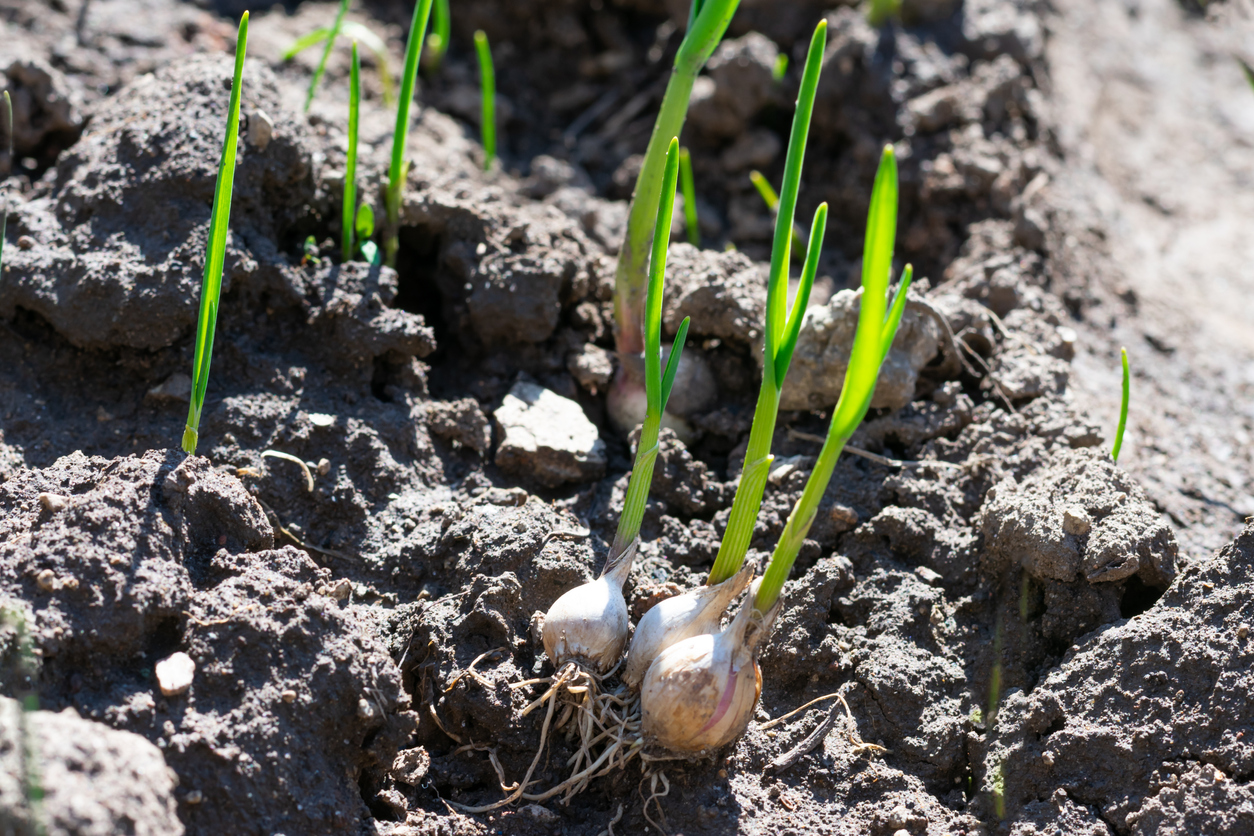
Garlic is an allium species that belongs to the lily family, and is closely related to onions, shallots, and chives. It grows underground in the form of a bulb composed of individual sections.
In the kitchen, the bulb is known as a “head” of garlic, while each section is known as a “clove.” Do not confuse this with the spice called “cloves,” or else you may become famous for your pumpkin pie and mulled wine — not in a good way.
Chefs and home cooks from many lands and cuisines use garlic for its aroma and taste. It’s a flavor and aromatic powerhouse that brings life to dishes from soups to stir-fries to pasta to sauces.
And boy, is garlic good for you! Its prebiotic fiber and bacteria-fighting phytonutrients both add serious nutritional boosts to your diet.
Types of Garlic
There are actually a couple of main types of garlic: softneck and hardneck.
The type of garlic you will usually encounter in the supermarket is the softneck variety, which gets its name from its soft, pliable stalk. It produces more cloves (which are enclosed in delicate, papery skin) than the hardneck variety, and has a more subtle flavor. (But hey, it’s still garlic, so “subtle” is relative. If you add some to breakfast muffins, it will be noticed.)
Hardneck garlic, named for its woody central stalk, has a bolder, spicier garlic flavor. You may find it more frequently at farmers markets. In the springtime, a variety known as garlic scapes may also make an appearance at these markets. Green with a curly stem, scapes taste similar to green onion varieties such as scallions and chives.
The flavor of garlic can morph depending on how it’s prepared. When raw, it can be pungent and slightly spicy. It takes on a nuttier flavor when cooked. Dried and ground garlic is mild, less pungent, and ideal for adding flavor to a variety of dishes (but again, I’d keep it away from sweet baked goods).
Garlic Nutritional Value
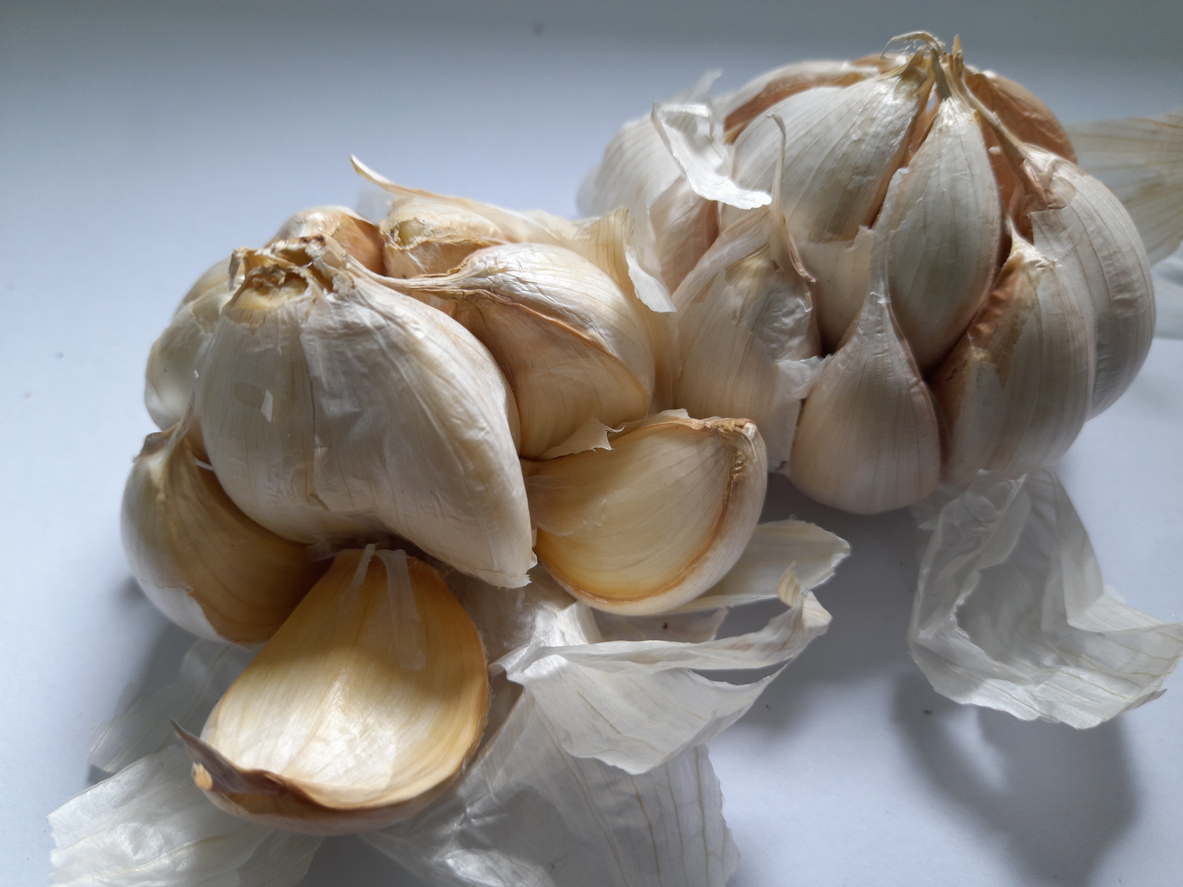
Garlic is so full of beneficial nutrients that whenever you add it to a dish, you’re adding a fully stocked natural pharmacy’s worth of nutritional value. In addition to prebiotic fiber that makes your microbiome jump for joy, garlic is also loaded with vitamins and minerals such as vitamin C, B6, zinc, and manganese.
But garlic’s unique claim to fame may be its treasure trove of antioxidant, antibacterial, and anti-inflammatory phytonutrients. Two of the most potent and best-studied are allicin and flavonoids. (If you were into new wave music in the late 1970s and you’re humming Elvis Costello’s “Alison” at this moment, I totally get it.)
Three Ways to Easily Peel Garlic
Of the great cultural advances of the last 50 years, perhaps the most exciting is the invention of an easy way to peel the sticky papery skin off a clove of garlic. When I was getting my early culinary education, there was an entire cottage industry of products that promised to separate the clove from the skin quickly without making your hands smell like, well, a garlic factory.
Now, thanks to social media and my own extensive testing, I can confidently present to you the most popular and efficient way to peel garlic:
- Begin by breaking the head of garlic into separate cloves.
- Next, place the “clove of honor” (the first one you want to peel) on a cutting board. Position the flat side of your knife blade on top of the clove, holding the handle firmly. Place the heel of your other hand on top of the blade and press or smash down firmly until the clove is crushed.
- Now you can easily pull off the loosened skin of the clove and discard it (or save it until you have enough to make a risque gown for the red carpet).
- Repeat with as many cloves as you like (you won’t hear the phrase “too much garlic” from my lips).
Some people prefer to preface this crushing technique by slicing off the tip of the clove (where it inserts into the head), as this can make the skin slide off even easier.
Here’s a video demo of three ways to peel garlic, starting with the method I just described:
https://www.youtube.com/watch?v=EQQt0xfEmQE
How to Cut Garlic
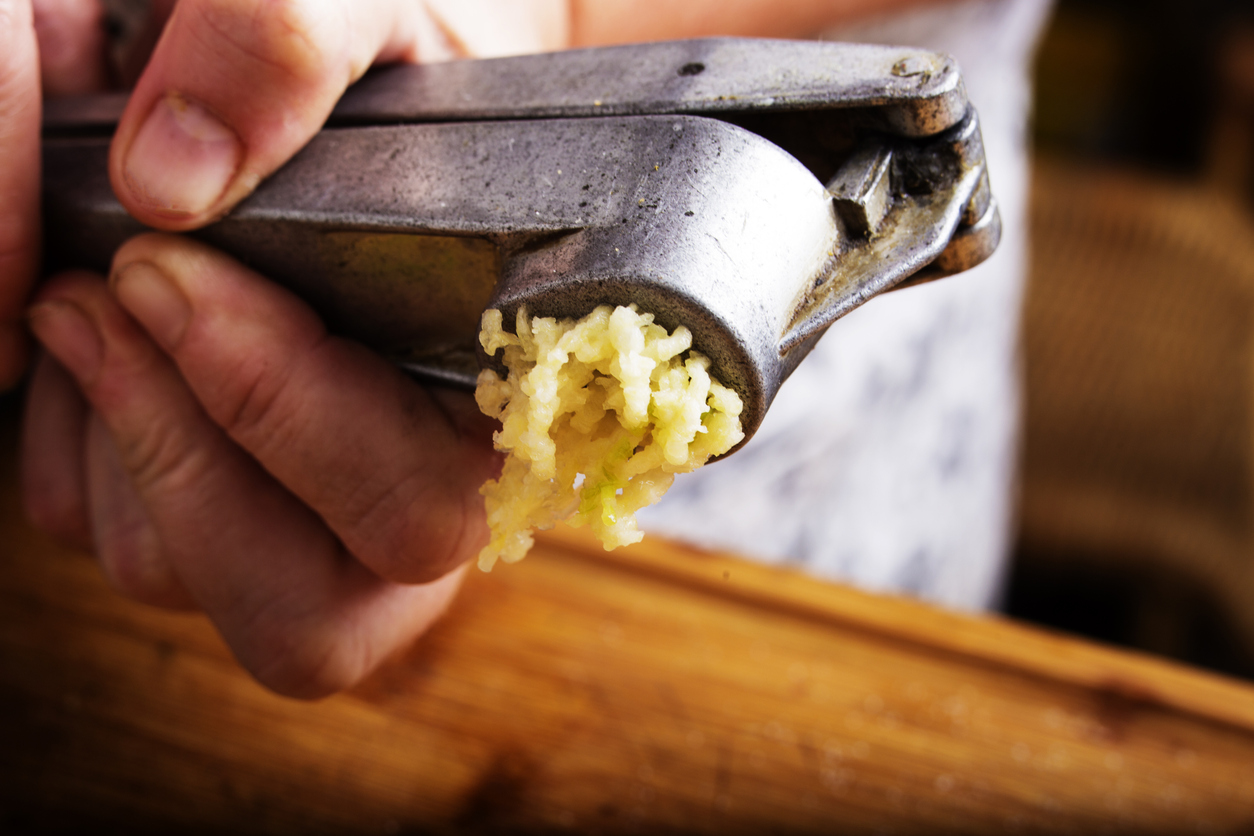
Depending on how you’ll be using it, there are various ways of cutting garlic into the shapes and sizes you want. Here are some of the top ways to cut garlic:
- Slice: Use a rocking motion with your knife to make thin slices.
- Chop: Move the blade back and forth over your slices to roughly chop garlic.
- Mince (finer than chopped): Using a two-handed chopping motion, run your knife over the garlic repeatedly to mince it into fine bits.
- Grate: Rub the clove up and down against a grater, making a fine mince.
- Crush: Lay the flat side of your chef’s knife over the clove while holding the handle. Using the heel of your other hand, smash the blade down firmly on the clove until crushed. Or use a garlic press.
- Knife blade puree: Roughly mince the garlic, then with the side of the blade’s edge, press down to crush the bits into a puree.
One thing about garlic is that allicin, the compound that gives garlic its distinctive aroma (and much of its health punch), remains dormant until the garlic is cut or crushed. Possibly this is because its purpose is to gross out predators who would otherwise gobble garlic to extinction for its nutritional benefits. In any case, if you want the maximum health impact, allow cut garlic to rest for five to ten minutes after cutting or crushing the cloves. This activates the enzyme alliinase, which in turn activates the allicin.
If you don’t have a kitchen timer and you enjoy 1970s new wave music, you can simply play Elvis Costello’s “Alison” two or three times while you wait for the allicin to come online. If you’re more of a 90s fan, Green Day’s cover is shorter, so you’ll need to play it three to four times while you contemplate the miracle of enzymes and phytonutrients.
How to Purchase and Store Garlic
The garlic you peel, chop, and cook with is only as good as the garlic you buy. When purchasing heads, look for bulbs that are firm and plump to the touch. Avoid heads that are spongy or soft, or ones that have dark spots or mold.
Once home, store garlic at room temperature in a cool dark place with good air circulation. A pantry or a counter in a corner of the kitchen that doesn’t get direct sunlight are good spots, especially in fall or winter. During the colder, darker times of year, a head of fresh garlic could last 4–6 months, although I’m sure I’ve never let one hang around that long.
Garlic powder, which you can get at pretty much any supermarket or convenience store, can last 3–4 years. If your recipe calls for fresh cloves and all you have is powder, the substitution is ⅛ teaspoon per clove. If you have more garlic than you can possibly use before it starts going bad (like from your garden), you can make your own powder by dehydrating garlic bulbs and then pulverizing them in a blender or food processor.
Here’s a video tutorial on DIY garlic powder:
https://www.youtube.com/watch?v=BJXJl-lOhJk
Culinary Uses of Garlic
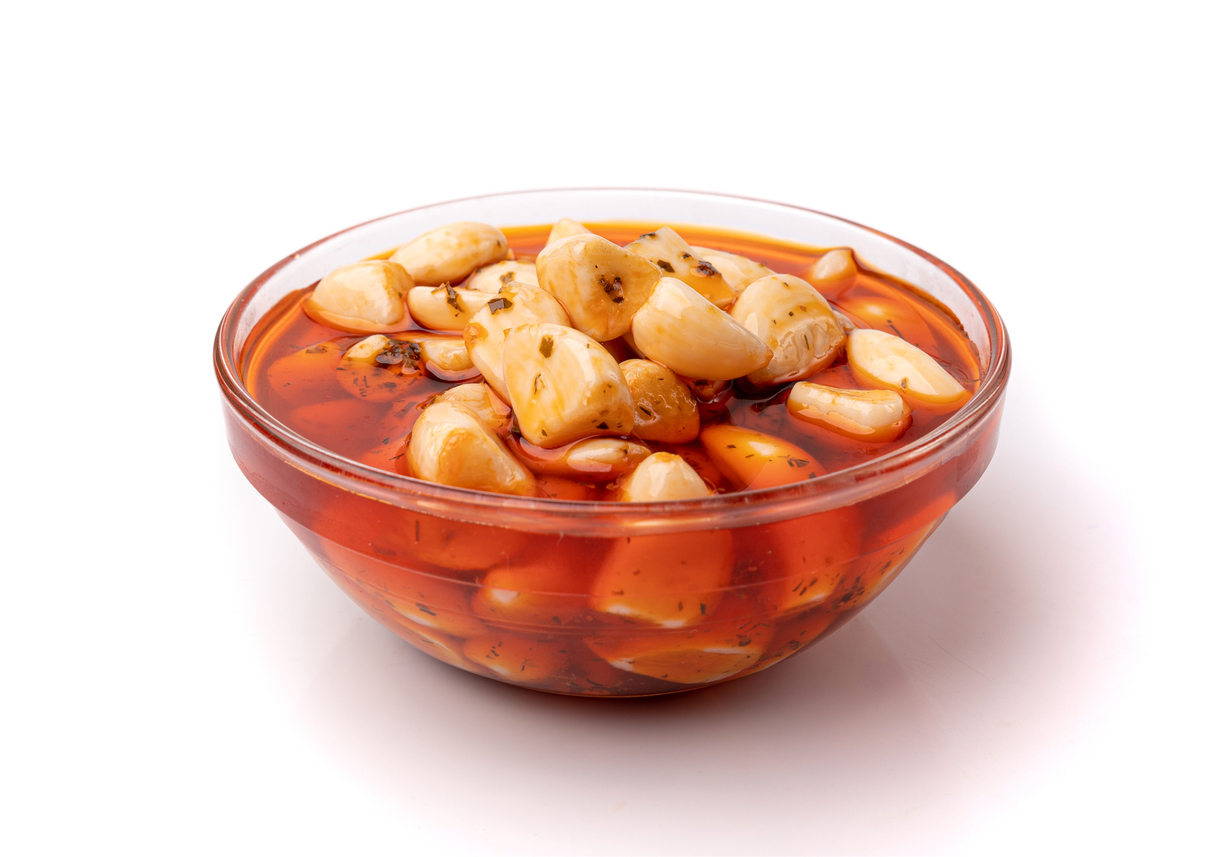
Before we get to the recipes, let’s take a quick look at some of the ways you can use garlic as part of your everyday cooking. Raw garlic can be used in recipes as follows:
- infused in oils
- added to dressings and sauces
- used as a spice rub for tofu or tempeh
- crushed on top of salads and grain bowls
- blended into juices and smoothies
- topping for bread
- pickled or fermented
And cooked garlic can be sautéed, sweated, or caramelized (to release the natural sugars — but again, resist the urge to add them to chocolate chip cookies). If you’re looking for ideas about how to use garlic prepared in these ways, you can get inspired by many delicious cuisines from around the world, including those originating in Korea, India, China, Thailand, Malaysia, the Middle East, North Africa, and Italy, among lots of others.
Garlic Recipes
Garlic is a universal spice that works well with so many ingredients, it’s no wonder it has a large influence on cuisines around the world. Whether you enjoy it in your savory morning oats or as part of a sauce on your favorite Mediterranean-inspired grain bowl, garlic is an integral part of what makes food so delicious, especially those of the plant variety!
1. Ocean’s Savory (Instant Pot) Oatmeal
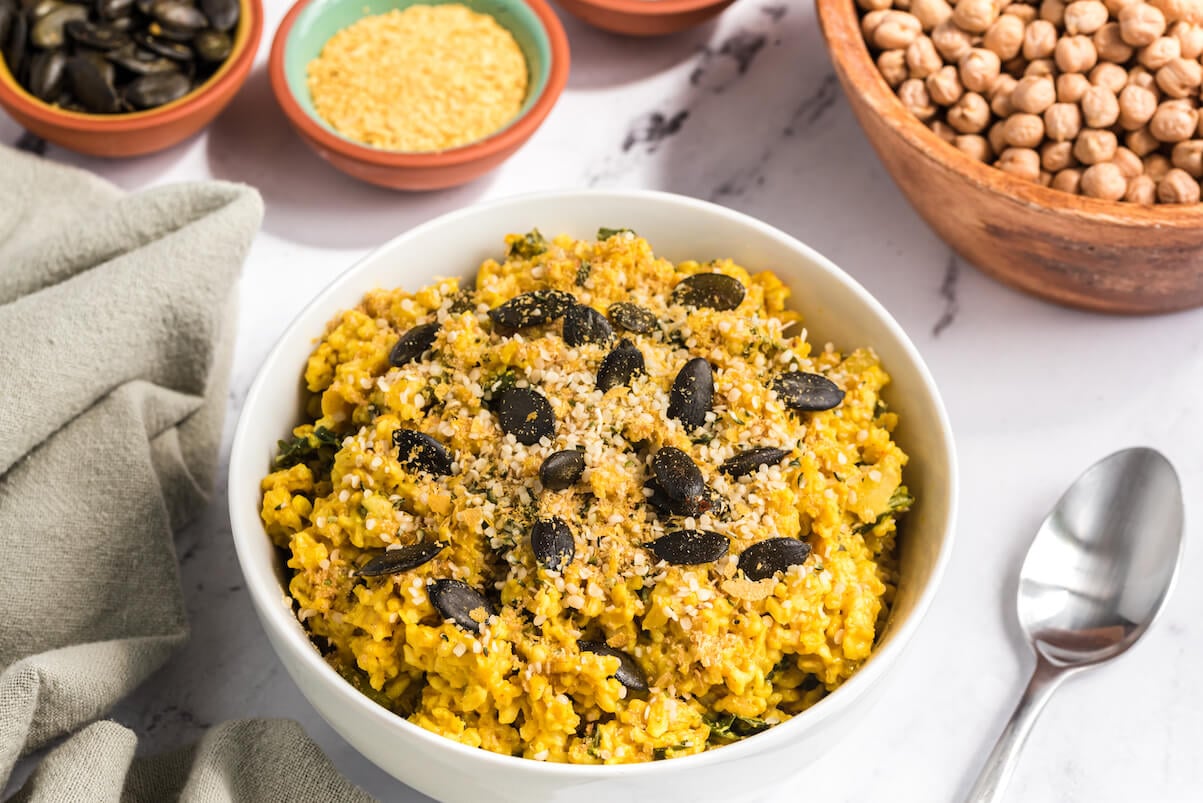
Nearly every ingredient in Ocean’s Savory (Instant Pot) Oatmeal provides the nourishing plant power you need to help fight inflammation, improve gut health, and keep you feeling your best. This morning meal boasts an abundance of plant-forward ingredients — turmeric, kale, oats, and plenty of garlic — that support optimal health. Plus, it’s a super tasty and fun way to use an Instant Pot!
2. Garlic Shallot “Butter”
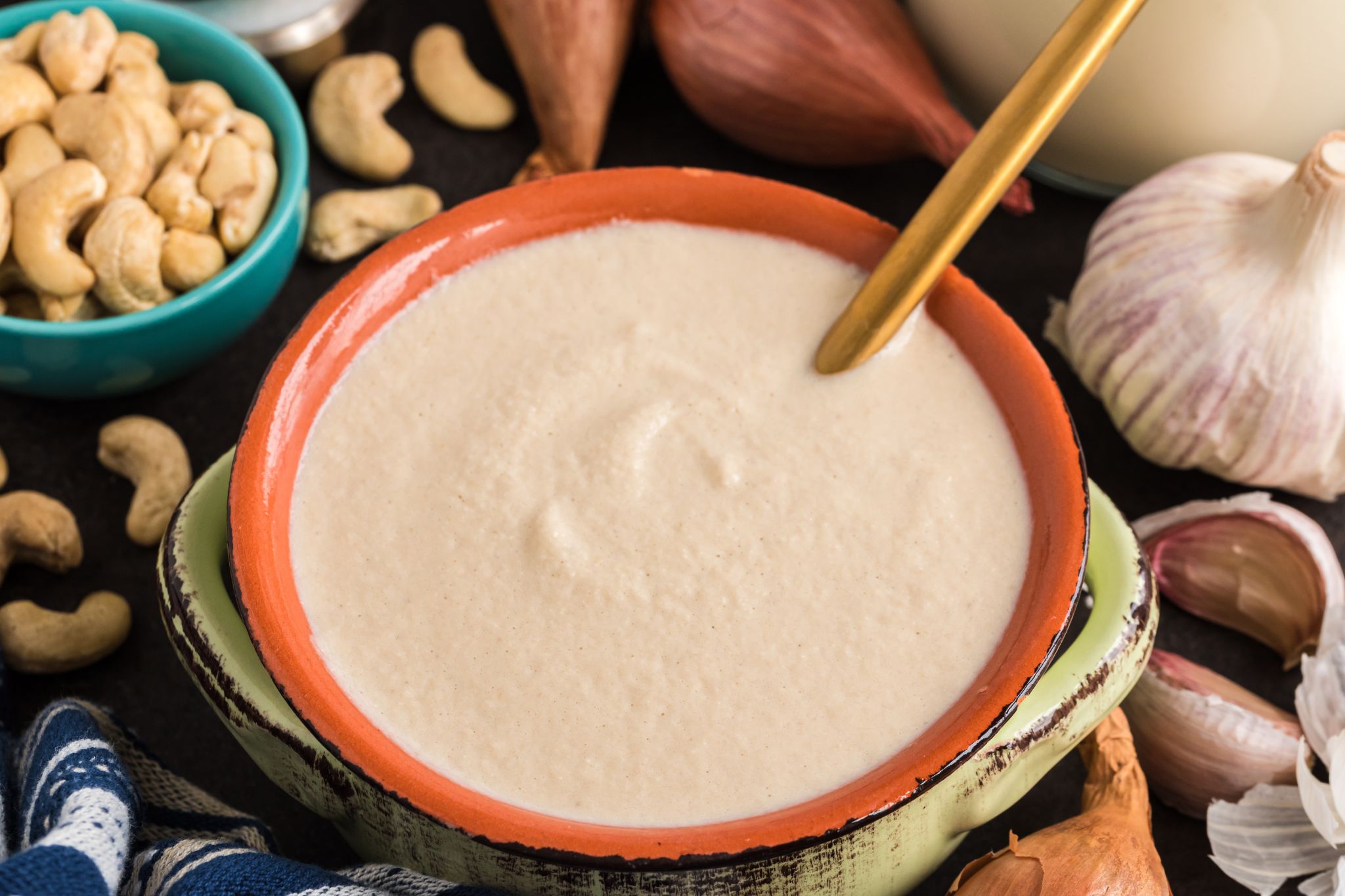
Creamy, melt-in-your-mouth Garlic Shallot “Butter” is the perfect condiment to infuse garlic’s rich flavor and potent nutrients into a variety of savory plant-based recipes. Give it a try on whole grain toast, veggies, pasta, or even a baked sweet potato. We can’t think of a tastier (and more delicious) way to enjoy the endless benefits of the small yet mighty garlic bulb.
3. Creamy Garlic Dressing
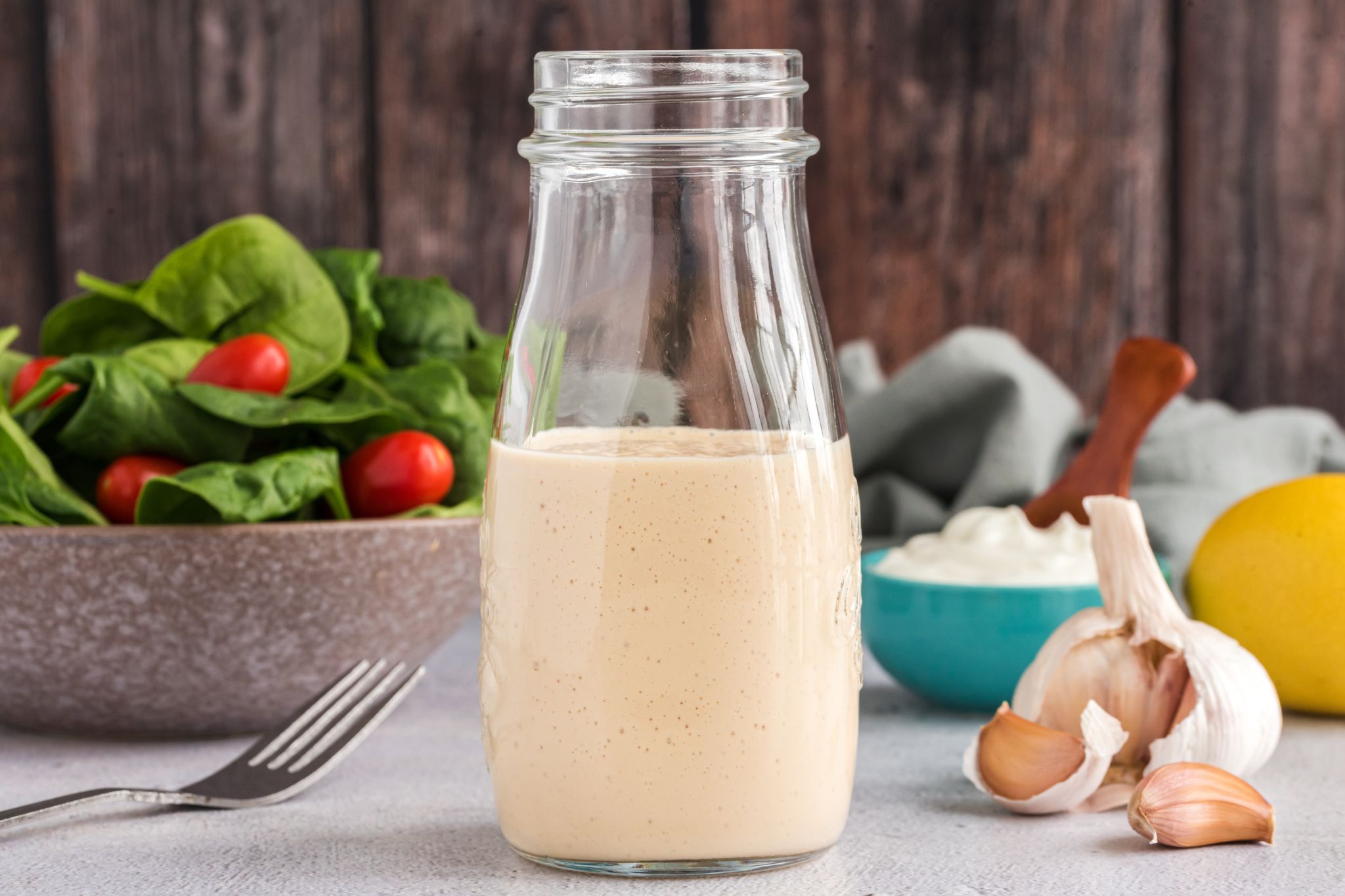
Alliums (think garlic, onion, leeks, green onions) are probably one of the most ubiquitous foods around the globe, so it’s no wonder these plant powerhouses are considered superfoods. Garlic, tahini, lemon, and ginger add a variety of vitamins and minerals — including B vitamins, vitamin C, folate, selenium, and manganese, not to mention loads of phytonutrients — to this creamy sauce. This Creamy Garlic Dressing will add a nutrient boost to your favorite bowls, salads, or plant proteins. It also makes an excellent anti-inflammatory and antioxidant-rich condiment, so don’t be afraid to use it liberally!
4. Sautéed Garlic Green Beans
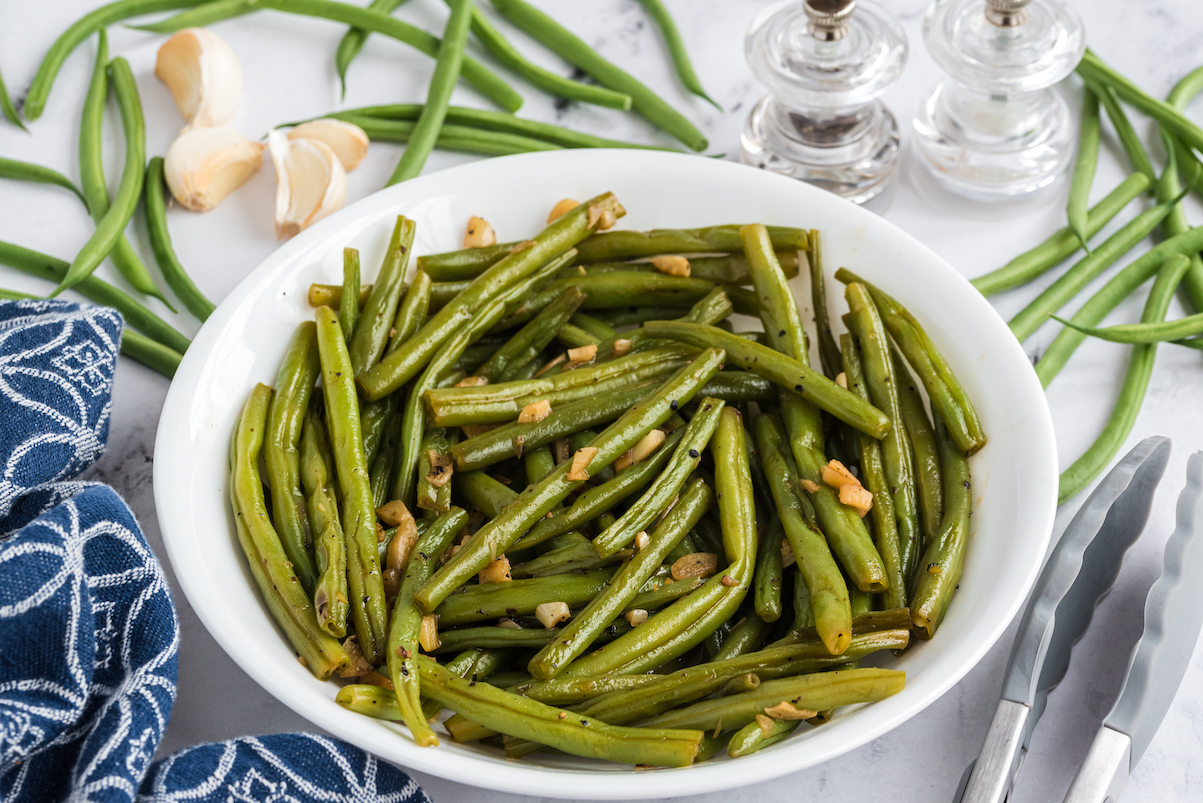
Five simple ingredients (including six garlic cloves) and 30 minutes are all that is needed to create these savory, garlicky, and nourishing Sautéed Garlic Green Beans. This plant-powered side is the perfect accompaniment to your favorite entrées. But with flavor and nutrition this big, it’s worthy of main dish status.
5. Instant Pot Rosemary and Garlic Chickpeas

This dish is brimming with lots of gut-loving ingredients thanks to the prebiotic-rich garlic, protein-packed and fiber-rich chickpeas, and fresh rosemary that ties it all together. Instant Pot Rosemary and Garlic Chickpeas are everything you love about the flavor of garlic with plenty of nourishing plant-based benefits, too. The best part is, the chickpeas get tender and buttery in the Instant Pot, making them a go-to for easy meal preparation each week!
6. Garlic Parmesan Broccoli
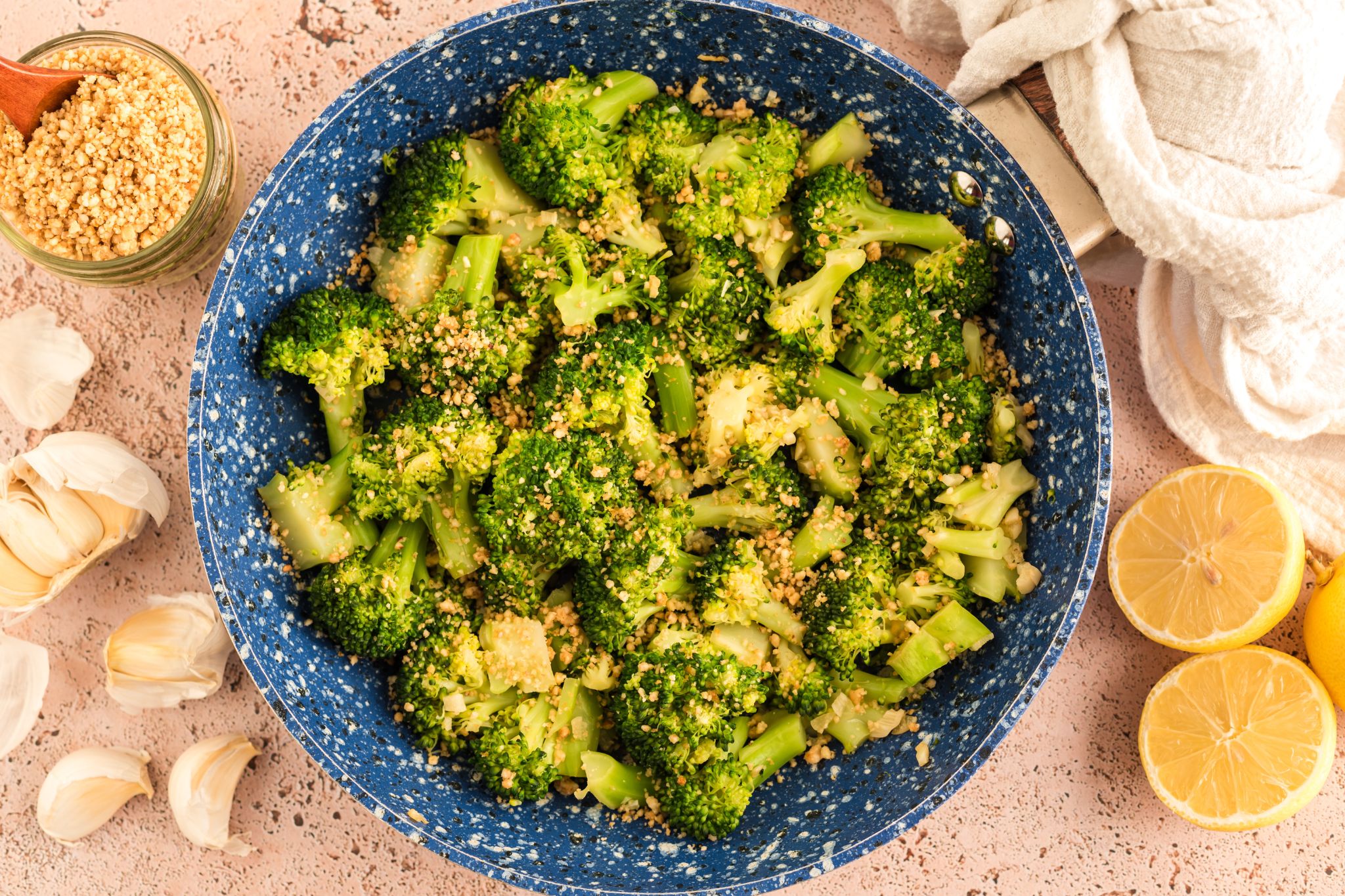
How can something so simple be so delicious and nutritious? Because garlic is the superstar, that’s why! It wears many hats in the culinary world and does wonders for you nutritionally. It also ties together sweet broccoli and nutrient-packed Vegan Walnut Parmesan for a warm and nutty side dish that is next-level!
7. Garlic and Ginger Veggie Stir-Fry
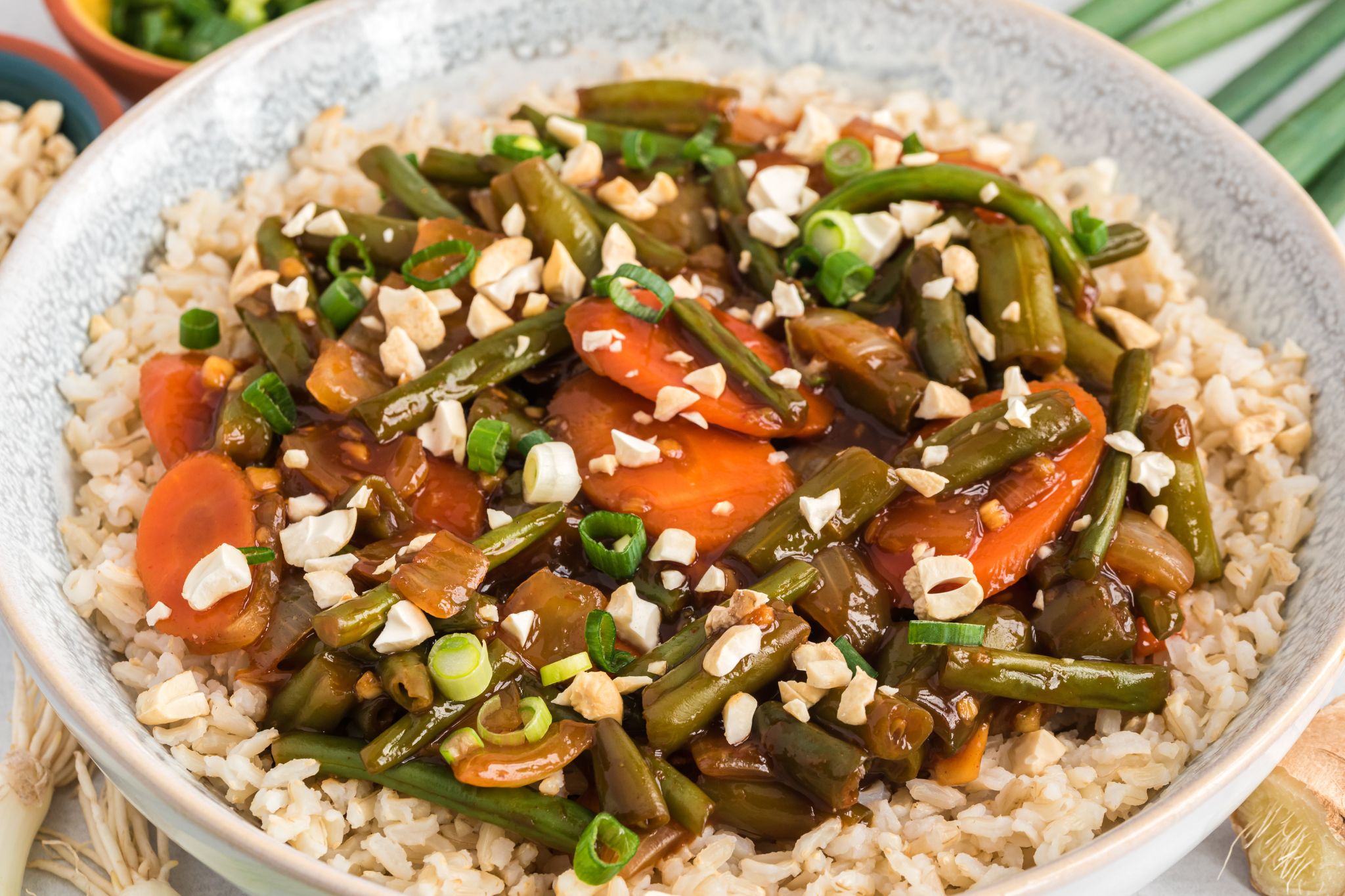
This wouldn’t be a garlic recipe roundup without a delicious and garlicky stir-fry! Garlic Ginger Veggie Stir-Fry comes together quickly and highlights garlic in all its glory. Best of all, the sweet and (mildly) spicy garlic sauce pairs perfectly with green beans, carrots, onions, and antioxidant-rich black rice.
Embrace the Spice of Life — Garlic!
Garlic is a super nutritious allium and can be used in a variety of recipes. It can be used in its raw or cooked state. And its aroma and flavor can elevate lots of plant-based dishes, from pastas to stir-fries to soups and stews.
Have fun in the kitchen and experiment with different ways of using garlic, from raw to cooked, mild to spicy, soup to stew, and everything in between. The more you use garlic in your cooking, the more you’ll come to appreciate its powerful health benefits and culinary diversity. Your body, and your taste buds, will thank you.
Tell us in the comments:
- What’s your favorite way to peel or cut garlic?
- What garlic-loving cuisines do you enjoy?
- Which garlic recipe will you make next?
Featured Image: iStock.com/sebastianosecondi

